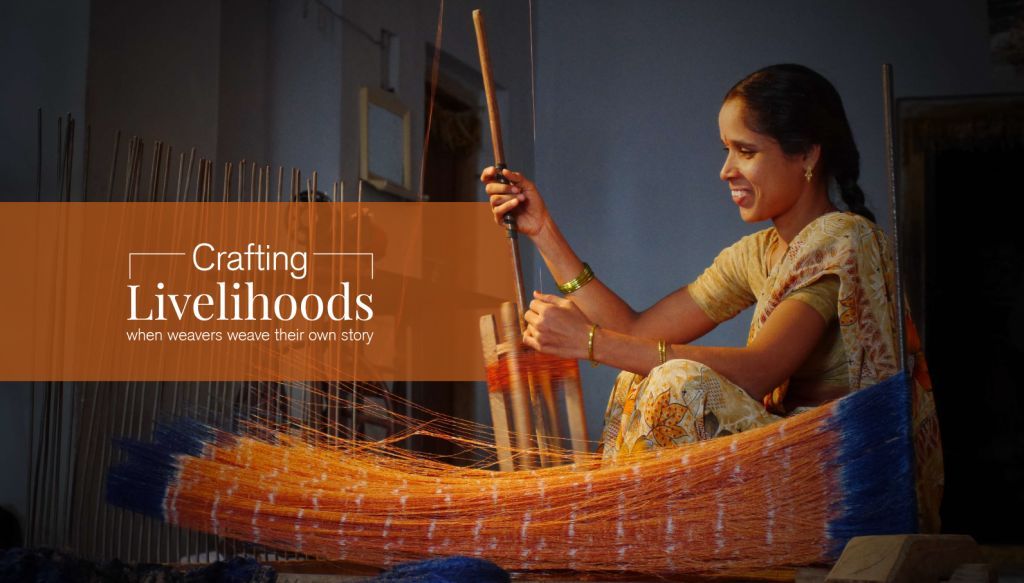Weaving history in Koyyalagudem
Walking through the bylanes of Koyyalagudem, a village in the Nalgonda district of Telangana, you hear the rhythmic clacking of handlooms. A community of weavers is at work, producing exquisite handcrafted products using skills and techniques passed down generations. It offers a stunning contrast to the nearby city of Hyderabad; traditional arts and crafts existing side by side with technology corporations like Google, Microsoft and Uber.
Weaving livelihoods in India

Koyyalagudem is just one village that's part of a nationwide community of over 9 million artisans and weavers, making India the world’s largest producer of handmade goods. The handloom sector is the second largest employment provider next to agriculture in India with close to 3 million households engaged in weaving and allied activities, out of which 87 per cent are located in the rural areas. Since the handloom sector is closely linked to other sectors like agriculture, spinning, dyeing and yarn supply, it provides both direct and indirect employment. It also involves the women in these communities, who play a major role in handloom weaving.
Since the handloom sector is closely linked to other sectors like agriculture, spinning, dyeing and yarn supply, it provides both direct and indirect employment. It also involves the women in these communities, who play a major role in handloom weaving.
Handloom weaving is an interconnected activity, like most other activities in in the villages. The locals underscore this interdependence by saying that if one handloom is active, it keeps sixteen related occupations alive, ranging from the growing of cotton to the marketing of the final woven products."
Challenges
However, the advent of industrialization has posed considerable challenges for these traditional sources of livelihoods. The handloom sector has seen a gradual decline over the last few decades. There are many factors behind this including a lack of strong marketing channels which are more equitable for the producers, strong competition from machine made look-alike products which are cheaper, access to raw materials and financial resources to support efficient production of these products. Additionally, long supply chains dominated by local traders has ensured that the weavers get mostly exploited both on the price of their products and their payments. Handcrafted products are sold at higher prices (between three to ten times the original price) in urban and international markets but these profits are rarely shared with the artisans.
Social marketplace
To tackle these challenges, at GoCoop, we believe that technology can drive social change. Our dream is to enable a sustainable livelihood for artisans and weavers through a simple, transparent, online marketplace platform. A platform which facilitates artisans, weavers and cooperatives to come online easily and support them in selling handcrafted products and handloom fabrics to their buyers directly.
The direct access to buyers helps artisans discover the end pricing and also helps them in realizing greater value for their products. Most artisans working through the GoCoop marketplace have realized a 15-30% higher value for their products as compared to the local channels. As artisans understand the customer preferences, they can further develop their products and seek greater value for their craftsmanship.

This is a paradigm shift in the way artisans have been working for generations and it has the potential to re-engage the next generation of artisans in craft production instead of leaving them no choice but to migrate to urban areas in search of livelihood opportunities.
With the world moving towards automation and even AI, there is a possibility of a considerable impact on millions of jobs in the next few years. At GoCoop, we are working towards supporting livelihoods of millions of artisans globally through our online marketplace - GoCoop.com.






Leave a comment